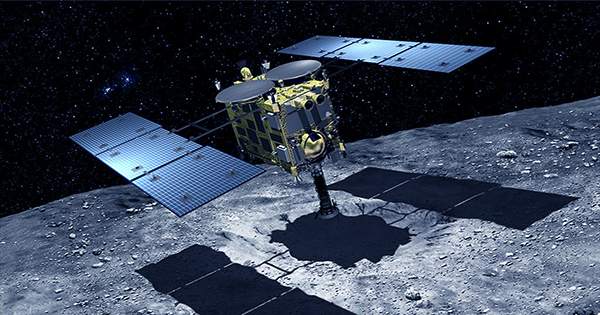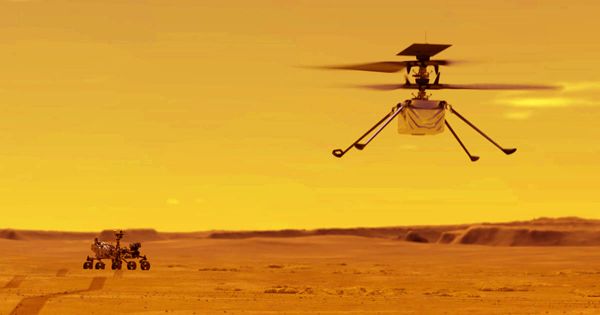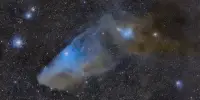Material from the Japanese Hayabusa 2 mission to Asteroid (162173) Ryugu returned to Earth just over a year ago. The first two studies reporting on the material’s analysis were published in Nature Astronomy this week. They also imply that we may be on the verge of learning if the water and organic stuff that allowed life on Earth came from asteroids similar to it.
Between June 2018 and November 2019, the Hayabusa 2 mission orbited Ryugu for 18 months, delivering amazing photographs and data from the spinning-top-shaped body. One of the main goals was to gather material off its surface, which is accomplished in two difficult maneuvers. Separate touchdowns are used to retrieve material from the asteroid’s various strata. The first shot a tiny bullet near the asteroid’s equator, capturing some of the asteroid’s surface dust. A second, bigger hit created a crater, which was later used to collect debris for a second touchdown. This was crucial since these grains had never been exposed to the outside world.

Hayabusa 2 gathered around 5.5g (roughly a teaspoonful) of dust in total. This may not seem like much until you realize that there are thousands of individual grains, each of which could analyze on Earth using sophisticated tools. Ryugu is a C-type asteroid, meaning it is a stony, dark body with a lot of carbon and water. They have also endured without losing their primordial makeup since the Solar System’s inception. However, imply that they are unmodified, Many characteristics of “carbonaceous chondrites,” meteorites discovered on Earth that are assumed to have originated from C-type asteroids, show that they have been changed by fluids.
These bodies, which are assumed to have originated near the asteroid belt’s edge, have ice mixed in with the rock. However, some of the ice has melted, resulting in the formation of clay minerals and carbonates (salts). The Hayabusa 2 mission had one goal: to look into the relationship between C-type asteroids and carbonaceous chondrites. Where did carbonaceous chondrites come from if C-type asteroids were the parent bodies? This is significant because carbonaceous chondrites are thought to have transported water and organic molecules to Earth, allowing life to arise.
The studies began with non-invasive and non-destructive observations because the samples were irreplaceable, and they were followed by complicated measures that need specimen manipulation and preparation. Which is a continuing process? So, what are the initial findings? Hayabusa 2 estimated Ryugu’s bulk density to be roughly 1,190 kilograms per cubic meter. This is too expected, given that the asteroid is thought to be a jumble of material that has gathered after colliding with a bigger body. It has a high porosity, like most asteroids, with many vacuum areas between the rocky components.
However, the density of the gathered material was also surprising, coming in at about 1,300 kilos per cubic meter. This is unexpected because the gathering process should have compressed the spaces, leaving a denser mound of particles. During transit and atmospheric arrival, these particles would have been disturbed much more. The density is likewise significantly lower than that of the Ryugu-like meteorites.
The authors propose two different explanations for this. Meteorites that landed upon Earth originally separated from their parent asteroid by impact. Unlike the Ryugu material, which was shielded by its capsule, their final spectacular dive into Earth’s atmosphere had a direct impact on them, producing fragmentation and break-up.
As a result, the meteorites that land on Earth have experienced at least one extra event that might reduce their porosity. Ryugu might possibly have a higher concentration of low-density material, such as organic molecules, than other meteorites.
This is significant because it means that the Ryugu material has kept a carbonaceous component that we have not been able to investigate previously. This should help us to gain a better understanding of life’s fundamental building elements. Spectroscopy was used to determine the composition of several of the Ryugu grains. Spectroscopy is a method that involves shining light on a sample and measuring the wavelength of the light reflected back. This is not the common approach for preliminary compositional analysis, but it was chosen since it is non-destructive, does not need sample preparation, and allows direct comparison of the grains with measurements collected by Hayabusa 2 on the surface of Ryugu.
















